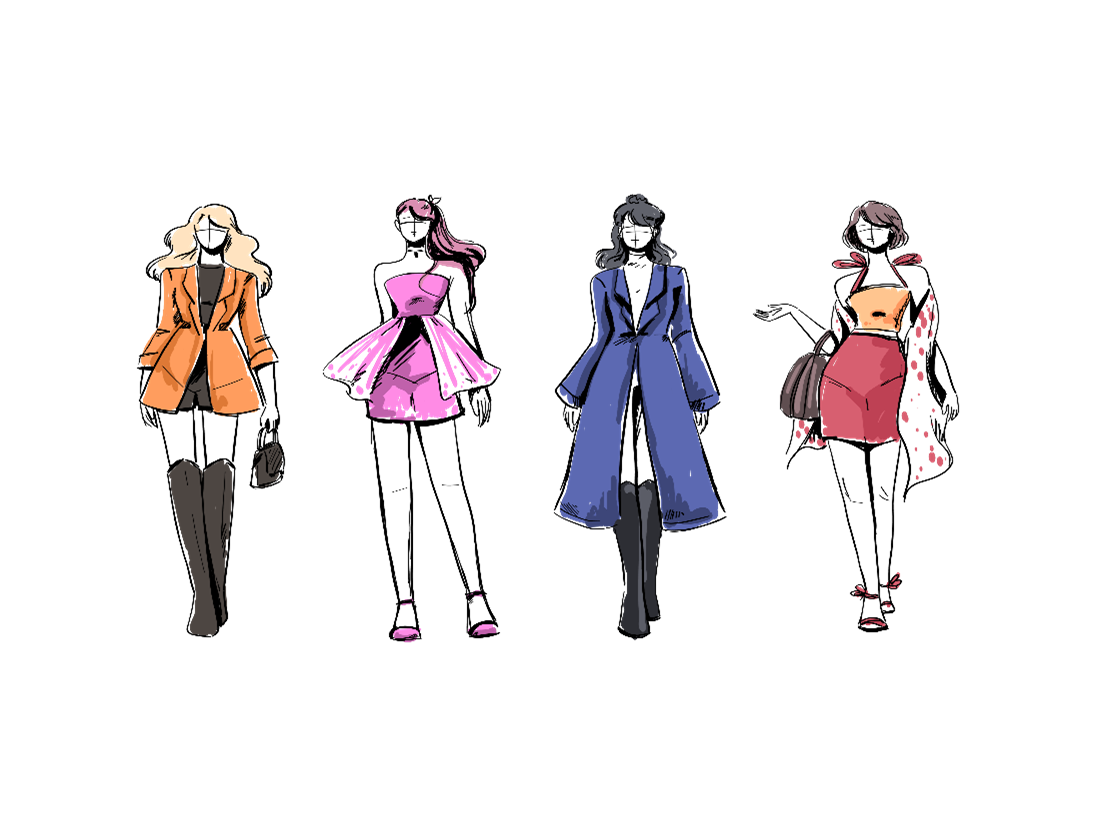In general, there are five ways to use both, either and neither. Here they are.
I. BOTH, EITHER, NEITHER

We use both, either and neither to talk about two things or people. More precisely, we use both + plural noun and we use either/neither + singular noun. Analyze the following examples:
- I love both dresses so much!.
- Guests can wear either black or white outfits.
- Neither parent was at the performance.
In short, this is the way they are used:
- Both refers to two things or people.
- Either refers to one thing/person or the other thing/person.
- Neither refers to not A and not B.
II. BOTH, EITHER, NEITHER + PREPOSITION OF
a) We can use both of + plural nouns with the, these-those, my, his, Andrea´s, (they can go with or without “of”) and both of us, you, them (with “of” necessarily). Here are some examples:
- Both (of) your children are adorable. (“of” is optional).
- Both (of) your parents are great people. (“of” is optional).
- Both (of) those pictures are magnificent. (“of” is optional).
- Both (of) Andrea´s children are married. (“of” is optional).
- Both of them did very well in the test. (“of” is obligatory because we are using a complement pronoun “us, you, them”)
- Both of us are married (“of” is obligatory)
b) We can use either / neither + of + plural nouns but the verb is in singular form. For instance:
- Neither of us has seen Mr. Jack Maclean lately.
- Neither of the competitors was from Europe.
- Neither of Andrea´s children is married.
- Either of those places is perfect for the reception.
- Can either of you lend me a pencil for the written exam, please?
- There were two pictures in Anne´s office. I didn´t like either of them
III. BOTH, EITHER, NEITHER _WITHOUT A NOUN.
We can use both,either & neither without a noun. All alone. For example:
- A: Do your parents speak Portuguese or Italian? B: They speak both.
- A: Would you rather have tea or coffee? B: Either. I don’t mind.
- A: Which day suits you for the meeting, Monday or Tuesday?
B: Neither. I’ll be awfully busy those days.
IV. BOTH…AND; EITHER…OR; NEITHER….NOR.

We can say both … and ; either … or; neither … nor; to specify the two things or people that we are talking about. For instance:
- Either your father or your mother must sign this document.
- Visitors can either wait here or in the lobby.
- My children like neither maths nor physics.
- Why are you so irresponsible? You neither called nor texted.
- My baby ate both the rice and the mashed potatoe very well.
- Both my brother and my sister lent me some money for my new car.
V. EITHER / NEITHER JOINING TWO IDEAS OR CONCEPTS
CONCEPTS
If one of the subjects in a sentence with either…or, neither…nor is plural, then the verb is plural too. Here are some instances:
- Either Sue or the girls ARE going to prepare dinner tonight.
(“the girls” is a plural subject so the corresponding verb is ARE).
- Neither Mr. Peterson nor his wife and children WERE invited to the celebration.
(“his wife and children” is a plural subject so the corresponding verb is WERE).
VI. SPECIAL USES OF EITHER & NEITHER
Sometimes more than two ideas are connected by either …or; neither . . . nor. For example:
- Joshua can compete in either basketball, soccer, badminton or tennis.
- He neither smiled, spoke, nor looked at me.
IN CONCLUSION

Use the word both with affirmative verbs.
- Both Jean and Linda are terrific classmates of mine.
Use either and neither (of) followed by a singular verb, in most cases.
- Either teacher is fine with me.
- Neither of the teachers is good for my child. He needs special care.
The word neither is used to join two negative ideas or concepts, so we use it with affirmative verbs.
- I like neither of the options (or I don’t like either of the options).
- Neither my father nor my mother can come to the school meeting.
Use either with negative verbs if the intention is negative.
- I didn’t like either of the plays I saw last week.
Use either with affirmative verbs if the intention is positive.
- They can either stay in room 1 or 2.
VII. CONSOLIDATION
VIII. EXERCISE I.
Read the sentences. Choose the correct answer. Multiple choice.
IX READING TEXT
The Real Cost of Cheap Fashion
By Laura Anastasia 2017

FIRST PART
(1) Many of our trendy, inexpensive clothes are made in places like Bangladesh, where workers— including children — toil under conditions that may shock you. Young women hunch over sewing machines in a windowless workroom in Bangladesh. Elbow to elbow in the stifling heat, they assemble jackets. Together, the women must sew hundreds of jackets an hour, more than 1,000 a day. Their daily wage is less than $3. Just a week or two later, these same jackets will be labeled fall’s hottest back-to-school item, selling to teens for $14.99 each at malls across the United States.
The jackets are just one example of what is known as fast fashion: trendy clothes designed, created, and sold to consumers as quickly as possible at extremely low prices. New looks arrive in stores weekly or even daily, and they cost so little that many people can afford to fill their closets with new outfits multiple times each year — then toss them the minute they go out of style. Chains such as H&M and Zara first popularized fast fashion in the early 2000s. It has since spread throughout the entire clothing industry. As a result, global clothing production has more than tripled since 2000. The industry now churns out more than 150 billion garments annually.
Long Hours & Little Pay
(2) Fast fashion items may not cost you much at the cash register, but they come with a serious price: Tons of millions of people in developing countries, some just children, work long hours in dangerous conditions to make them, in the kinds of factories often labeled sweatshops. Most Garment workers are paid barely enough to survive. Fast fashion also hurts the environment. Garments are manufactured using toxic chemicals and then transported around the globe, making the fashion industry the world’s second-largest polluter, after the oil industry. And millions of tons of discarded clothing piles up in landfills each year. “A lot of what we’re throwing away hasn’t even been worn that many times,” says Elizabeth Cline, author of Overdressed: The Shockingly High Cost of Cheap Fashion. “Clothing has become a cheap form of entertainment.”
(3) Until the 1970s, most apparel worn by Americans was made in the United States. Then clothing production, like a lot of manufacturing, began moving overseas, where labor costs were lower. As recently as 1990, half the clothes sold in the U.S. were made in the U.S. Today, it’s just 2 percent. Most American clothing companies now manufacture their merchandise in developing Countries in Asia. Workers there earn a fraction of what U.S. workers make — and have fewer protections. The lower labor costs translate to lower prices for shoppers (who then buy more clothing) and higher profits for retailers. That has helped make fashion a $3 trillion global industry.
(4) Today, many of the world’s 75 million garment workers live in China and Bangladesh, the top two clothing producers. Workers often earn just a few dollars a day. Many are women in their teens. “They’re sometimes the first one in their families to have a real job, so the family is eager to get them into the factories as quickly as they can,” says Michael Posner of New York University’s Stern Center for Business and Human Rights. “It’s a very tough existence.”
(5) Indeed, garment workers often toil in windowless rooms thick with fumes from the chemicals used to manufacture and dye clothes. If they dare miss a day because they’re sick, they risk being fired. For Taslima Aktar, that wasn’t an option. The 23-year-old couldn’t afford to lose her job at the Windy Apparels factory in Bangladesh, so when her manager refused last year to give her time off to see a doctor about a persistent fever, she accepted it. Weeks later, Aktar passed out at work. After she was revived, her boss sent her back to her sewing machine. Shortly after, her heart stopped and she died. “We know the same thing can happen any day, to any of us,” says one of Aktar’s co-workers, who told her story to Slate.
TO BE CONTINUED.
X PRACTICE I.
For each question or statement, mark the correct answer
XI. BIBLIOGRAPHY
Cambridge University Press. (2015). Cambridge Advanced Learner’s Dictionary. Fourth Edition.
Eastwood, J. (2019). Oxford Practice Grammar. Intermediate. Oxford University Press.
Hewings, M. (2013) Advanced Grammar in Use with Answers: A Self-Study Reference and Practice Book for Advanced Learners of English. CUP
Murray, L. (2014) English Grammar. Cambridge University Press.
Swan, M & Walter, C. (2016). Oxford English Grammar Course. Intermediate. Oxford University Press.
XII. WEB RESOURCES
Images1,2,3_Compra propia de licencias de banco de imágenes de Pixton y Pngtree, exentas de derechos de autor. https://www-es.pixton.com/ & https://es.pngtree.com/free-backgrounds
Image4_Compra propia hecha por Connie Reyes Cruz de licencias de banco de imágenes de Pixton y Pngtree, exentas de derechos de autor. https://www-es.pixton.com/ & https://es.pngtree.com/free-backgrounds.
XIII. CREDITS
- Practice exercise written by Connie Reyes Cruz_2022_ENES- LEÓN-UNAM
- Audio version performed by Kimberly and Matt_Compra propia de licencia de uso de voces en Voicemaker, exenta de derechos de autor. https://voicemaker.in/ _Connie Reyes Cruz_2022_
- Practice exercises written by Connie Reyes Cruz_ 2022_UNAM-ENES-LEÓN
-
From "The Real Cost of Cheap Fashion" by Laura Anastasia. Published in THE NEW YORK TIMES UPFRONT, September 4, 2017. Copyright © 2017 Scholastic Inc. Reproduced by permission. Unless otherwise noted, this content is licensed under the CC BY-NC-SA 4.0 license_ https://www.commonlit.org/es/texts/fyc-the-real-cost-of-cheap-fashion
- Practice exercise written by Connie Reyes Cruz
- Audio version performed by Kimberly and Matt_Compra propia de licencia de uso de voces en Voicemaker, exenta de derechos de autor. https://voicemaker.in/ _Connie Reyes Cruz_2022_